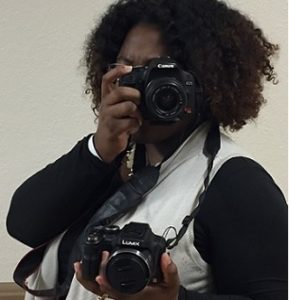General news topics.
 Every cognizant person will agree that we are never too old to learn. Learning is even better when you enjoy it, and I do. I take pride in acquiring knowledge about new things. There are various ways to learn. Firsthand experience is often an excellent teacher. On the other hand, there is knowledge to be gained from articles, books, and films. Documentary films are high on my list of educational tools.
Every cognizant person will agree that we are never too old to learn. Learning is even better when you enjoy it, and I do. I take pride in acquiring knowledge about new things. There are various ways to learn. Firsthand experience is often an excellent teacher. On the other hand, there is knowledge to be gained from articles, books, and films. Documentary films are high on my list of educational tools. Each year, a local TV station sponsors a Health and Fitness Expo where no-cost wellness classes and health screenings are available to attendees. There are also hands-on activities including endurance events to challenge health enthusiasts like me.
Each year, a local TV station sponsors a Health and Fitness Expo where no-cost wellness classes and health screenings are available to attendees. There are also hands-on activities including endurance events to challenge health enthusiasts like me.
In years past, I have participated in exercises from aerobic to yoga; but the thing that beckons me most is the rock wall. You might think that a card-carrying AARP member might shy away from something so rigorous. No so, I enjoy a challenge. So upon arriving in the exhibit hall early Saturday morning, I headed straight for the rock wall. Game on!
Before a participant is strapped into the safety harness and allowed to climb the wall, we are required to sign a waiver. It warns that if I should fall and break a bone, sustain some other bodily injury, or worse yet, drop dead – while not acting my age – the contract absolves the promoter of any liability. After signing the waiver, a red, one-inch wide band, similar to the band you receive in a hospital emergency room, was placed around my wrist indicating that I had signed my life over to Divine Providence. Also, in case I wanted to try the climb again later or attempt some other age-defying stunt, I would simply show the band to the staff person.
A previous attempt and failure to scale the wall two years ago made me more determined to try again. With true grit, I was able to propel myself a few stones higher this time. The Lat Pulldown and other strength building gym machines had helped me build my upper body strength, but it wasn’t enough. I was about four feet off the ground when my calves started cramping forcing me to end my quest and indicating that I should have spent more time stretching.
As I walked away from the wall, feeling defeated but not dejected, I glanced back to see a young boy who looked to be about ten years old ascending that wall like Spider-Man on a mission.
Geared up for another challenge I went in search of the Spartan exhibit. Days earlier I had watched a young reporter on TV demonstrate the Spartan race and I told myself “I can do that.”
Unlike the real 3-4 mile Spartan race with its many obstacles and competitors, the Spartan course at the expo is a scaled-down, mini-version. The first thing a contestant does is warm up by running 30 seconds on a curved treadmill. Then, the objective is to go through each obstacle on the course as fast as you can. Since I wasn’t competing against anyone but myself, time didn’t concern me. My goal was simply to conquer each obstacle.
After getting off the treadmill, I walked (did not run) to the first wooden wall, it was approximate four-feet high. The struggle to climb over it took me approximately 5 minutes. (I could have walked around it, but that would have defeated the purpose, would it not?) Next came the bear crawl. That was easy. I scooted beneath the mock-barbed wire fence in about 60 seconds. After exiting the bear crawl, I was supposed to run to and climb over a higher, inclined wall. That wall was twice my height, at least 10 feet. After two earnest attempts, I walked around and found myself facing another wall. It was 7 feet. Pass! The final task was to pull myself up on a rope mounted to a post and ring the bell at the top. Sound easy? It wasn’t.
The two young men on the staff, who shadowed me along the course probably had a good laugh about my senior version of the Spartan crawl, er, I mean race after I left, but throughout my effort, they were encouraging and even gave me a high-five as I strolled across the finished line.
I’m not dismayed that I failed to complete the Spartan course. Completing two out of five obstacles wasn’t bad. I enjoyed every challenging minute. Later that Saturday evening I had some muscle aches, and pains in places that I didn’t know could have aches and pains, proof that I had pushed my body. I think I’m hooked now on the Spartan course.
My cousin, Rai, told me that she is planning to do the real Spartan race. She’s athletic and half my age. I know she will finish the course. I’ll just wait until next year’s expo and try the mini version again.
Under the new norm, anything goes, and few things are taboo. It seems like nothing is a given anymore. Before sex reassignment surgery if you were born male or female most likely, you lived and died that way. A medical or cosmetic procedure can now alter nearly every natural human feature. Laser surgery can permanently change eye color. Hair — that’s a no-brainer, think color, weaves or extensions. There are makeovers available for one’s BBF – breasts, butt, and fingernails. And Black people who so desire can change their skin color. That’s right. If you are a person of color and you dislike your appearance, you don’t have to stay that way.
“Say it Loud, I’m Black, and I’m Proud” was a 1968 hit song with a strong meaning by “the Godfather of Soul” James Brown. Sometimes, it seems as though Brown’s message of Black pride did not filter down to some Blacks in post-boomer generations.
Numerous high profile Black people are believed to have whitened their skin. Most notable is pop star, Michael Jackson. Some of the Braxton’s, fashion model Iman, rappers Lil Kim and Nicki Minaj are only a few among a growing list of celebrities who have chosen to shed their darkness and lighten up.
There are various ways to lighten dark skin. Glutathione treatments are popular. Depending on where you get the treatment, how many shots you take, and the maintenance doses required to keep you looking light and bright, the cost of regular injections can range from several hundred dollars to as much as $4000 per treatment. Skin-lightening can also have dire consequences.
In spite of the risk and cost, skin-lightening is not done exclusively by the rich and famous.
Glutathione treatments, bleaching creams, and other skin-lightening treatments are popular, not only in the U.S. but in other countries, as well, including India, Asia, and Jamaica where lighter skin tones are perceived as more beautiful than darker skin.
Although some skin-lightening crèmes are deemed to be dangerous because they contain mercury and cancer-causing chemicals, that doesn’t prevent the industry that sells the products from enjoying a booming business.
Many Blacks see skin-lightening as a rejection of black identity. What is it that causes some Black people to abhor their dark skin? Is it self-esteem? Vanity? Mental illness? Anti-dark skin color bias and the notion that life and living are much easier when you are light or darn near white is an assumption that stems from slavery and racists propaganda.
How about you? Are you are a dark-skinned Black person reading this, if so, are you comfortable with who you are or are you shameless about changing skin color? Do you believe that dark skin color is the black man’s burden?
If you are conflicted, perhaps you will find some understanding about the subject in this stunning and sometimes graphic video. It includes a wealth of information concerning everything from the reasoning behind skin-lightening to the famous doll test. Teachers will certainly be familiar with the doll test. Set aside 20 minutes because once you start watching this video, you won’t want to turn it off.
 When I was a child in elementary school, on the first day of art class Mrs. Graves, our teacher gave each student a plain gray twin-pocket folder. She told us to store assignments that she would be giving us throughout the school year in the folder and keep it in the cubbyhole of our desk until she collected them. She then instructed us to write our name on the back of the folder and added that we had about 5 minutes to draw something of our choice on the cover. “Be creative,” I remember her saying. “Use your imagination.”
When I was a child in elementary school, on the first day of art class Mrs. Graves, our teacher gave each student a plain gray twin-pocket folder. She told us to store assignments that she would be giving us throughout the school year in the folder and keep it in the cubbyhole of our desk until she collected them. She then instructed us to write our name on the back of the folder and added that we had about 5 minutes to draw something of our choice on the cover. “Be creative,” I remember her saying. “Use your imagination.”
While we were sketching our amateurish masterpieces, she walked around the room. Stopping briefly at each child’s desk, she would look at the drawing and then hold up the folder for the class to see. Afterward, she’d offer encouraging comments about that student’s creation. Some of my resourceful classmates drew pictures of their home, a pet, or their family. One student sketched colorful birds perching on the branches of a leafless tree, and a couple of others attempted self-portraits. I looked intently at each folder. The skill of my classmates was evident. Then I looked down hopelessly at my naked cover.
As the teacher grew nearer to me, I became panicky because I couldn’t think of anything to draw. My brain was producing one big question mark. THAT became my cover. Question marks. Large ones. Small ones. Some were right side up, others upside down and sideways. Using every crayon in my Crayola box, red, yellow, blue, green, orange, brown, purple, and black, I covered the front of the folder with question marks and put down the last crayon as she arrived beside my desk.
Unlike the outspoken woman I became, the little girl back then was self-conscious and painfully shy. As I raised my arm and handed Mrs. Graves the folder, I simultaneously lowered my head to my chest, anticipating criticism for not being more creative.
“Curiosity. That’s what your drawing depicts.” She said cheerfully, after looking at my folder. “Lots of question marks. You are curious about things. Very good.” She handed the folder back, and I forced a smile as I exhaled.
I saved that folder for years and wished that I had it today. It must have been an omen because my insatiable curiosity hasn’t diminished over the years. To this day, I still ponder things that some folks wouldn’t give a second thought about; I want answers. I want to know the why behind the why.
Take photographs for instance. There is a common saying that the camera adds 10 pounds to the person in a photo. I’ve long wondered why people look fatter in pictures; then they do in person. Wait a minute. I think I hear the sound of the PC police approaching. Lest I be accused of body-shaming and offending someone, I’ll restructure the question. Granted that I already have more thickness than I desire I’d like to know why do I – let me emphasize I – look fatter in pictures?
According to Gizmodo, Business Insider and other sources of my research, the camera gives the illusion of people being larger than they are because cameras have a single lens through which they capture images while humans have binocular vision (meaning that we have two eyes). Our brains compensate for this double vision. When we focus on photographed images, we perceive depth and can see around the edges of objects. This perception can give the impression that an object is wider than it is, including our bodies. Other factors contribute to our perception of the images in photos including lighting, posture, poses, clothing, the angel (shooting position) and even the camera lens. When any of these things are askew, it can make images appear larger than they are. Viola! Extra pounds.
If my rudimentary explanation on why pictures make us look fat have you second-guessing whether you ever want to be photographed again, this short and entertaining video will provide some tips on how not to look fat on camera.
 Today’s sound of music is a far beat from the 1965 Mary Poppins’ soundtrack. Old school sanitized hits like I’m Gonna Make You Love Me have been replaced by a genre of sexually explicit (some would say downright obscene) tunes like My Neck, My Back.
Today’s sound of music is a far beat from the 1965 Mary Poppins’ soundtrack. Old school sanitized hits like I’m Gonna Make You Love Me have been replaced by a genre of sexually explicit (some would say downright obscene) tunes like My Neck, My Back.
A sexagenarian (How’s that for a play on words?) friend of mine enjoys good music as much as I do. Like other mature people of our generation as we aged-out of youthful imprudence into responsible adulthood some things changed, but not our taste in music. However, unlike me, my friend can readily identify some of the contemporary and hip-hop artists about whom I know nothing and could care less. And while I consider much of the present-day music to be a waste of talent and airspace, he often defends it. But something that occurred recently when he was dining in a buffet-style restaurant gave him second thoughts.
When he began telling me the story, I figured that he was going to gross me out about the food. I didn’t want to hear that, because I have occasionally eaten at that place (that I will not name), although it has never been on my list of favorites.
It turns out that his complaint was not about the food or the service. His beef was over the sexually explicit lyrics in a song that was playing over the restaurant’s sound system as he was preparing to leave. He said he approached the owner and a clerk who were standing at the register near the doorway and in an unobtrusive voice complained that the music playing was unsuitable in a family diner. His expression of disapproval apparently motivated some other patrons who were standing nearby because a few of them chimed in. One man, who my friend guessed to be fortyish in spite of his backward-turned cap, said, “He’s right. There are small children in here. They don’t need to be listening to that s**t.”
Then, an older woman described as having the demeanor of a no-nonsense, church lady, added, “It’s a shame. This is a family restaurant. That music is totally inappropriate in a place like this. This ain’t some hip-hop joint.”
The owner apologetically explained that it was Sirius XM radio and added that he had no control over what the station was playing. As he left, my friend heard someone in the group (perhaps it was church lady) say, “Is it unreasonable to think that you could change the channel?”
When I asked my friend what was the name of the song. He said, he didn’t know it, but then he repeated some of the lewd lyrics. (Did you think that I was going to write those words here? Really?) No, I’m can’t name that tune either, but I’ll bet it’s on the Rankers list of rappers with the dirtiest rhymes. Finished reading this post, before your curiosity leads you to rush over to that page and check out the list.
Some of you readers may remember that in 1985, Tippy Gore, wife of Senator and later Vice President Al Gore, spearheaded an organization called The Parents Music Resource Center (PMRC). It championed the cause for including Parental Advisory labels on albums containing foul language and explicit lyrics.
PMRC faced strenuous objection from numerous people, including many in the music industry like John Denver, Ice Tea, and Frank Zappa, who protested that the proposed labeling would result in censorship.
In his book, “The Ice Opinion” published in 1994, Ice T wrote, “Tipper Gore is the only woman I directly called a bitch on any of my records.” In the same book, he later seems to express regret, saying, that he was 15 years old during the time of the PMRC controversy. He continues with, “I am now 41 years old and the father of two teenaged girls.” Ice T, whose real name is Tracy Lauren Marrow is now 60 years old with three daughters. I wonder how much has he changed his tune?
Although Tippy Gore and three other women whose husbands held prominent positions were successful in forming the PMRC, that guidelines and rating system did not last.
The current Parental Advisory warning label, trademarked by the Recording Industry Association of America (RIAA) grew out of the PMRC. It was introduced in 1990, the same year that PMRC shut down. The label, now affixed to germane music products and other merchandise, does not control what is broadcast over radio programs. And while some broadcasters play edited versions of songs to eliminate content that may be considered objectionable or age-inappropriate, owners of restaurants and other businesses should assume some responsibility for music played in their establishments.
